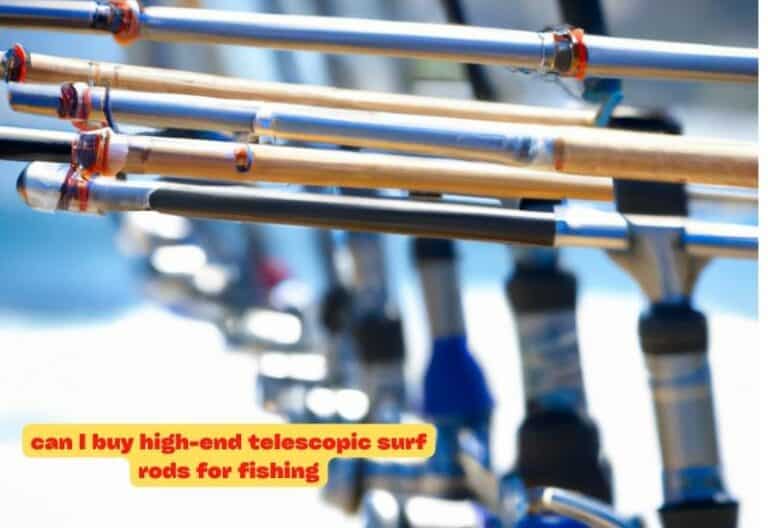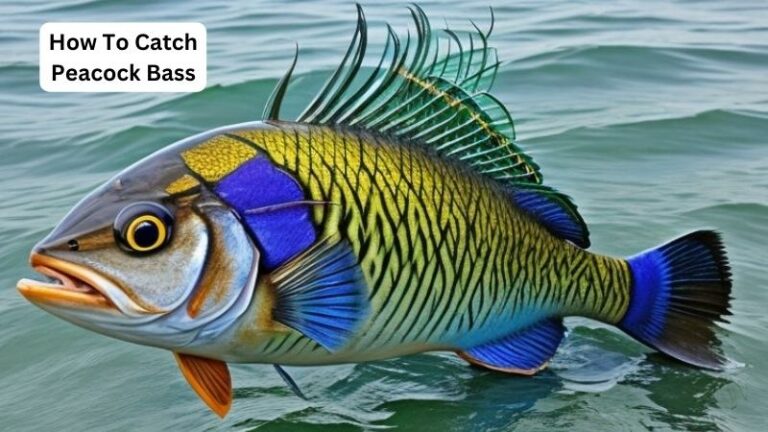Is Eating Fish From Florida Canals Safe? Find Out Now!
Have you ever wondered, “Is Eating Fish From Florida Canals Safe?” Well, the answer to that question is essential for anyone who enjoys fishing or plans to consume their catch.
Florida is known for its beautiful canals that attract anglers from all over, but there are concerns about the safety of the fish found in these waterways.
In this article, we will delve into this topic and provide you with valuable insights to ensure that you can enjoy your catch without worry. So, let’s dive right in and explore the safety of eating fish from Florida canals.
Is It Safe to Eat Fish from Florida Canals?
Florida is known for its abundant waterways, including a vast network of canals that crisscross the state. These canals offer a variety of recreational activities, including fishing. However, many people question the safety of consuming fish caught from Florida canals. In this article, we will delve into this topic and explore the potential risks and benefits associated with eating fish from Florida canals.
Understanding Florida Canals and their Environmental Conditions
Florida has an extensive canal system, constructed to manage water levels and facilitate drainage. These canals vary in size and connect various bodies of water, such as lakes, rivers, and the ocean. They provide habitat for various species of fish, making them popular fishing spots for both locals and tourists.
The Ecology of Florida Canals
Florida canals serve as a unique ecosystem, supporting a diverse range of aquatic life. The combination of freshwater inflow, tidal influences, and nutrient-rich sediments creates an ideal environment for fish and other aquatic organisms to thrive. The canals are home to species like largemouth bass, bluegill, catfish, and tilapia, among others.
Factors Affecting Water Quality in Florida Canals
Water quality in Florida canals can be influenced by several factors, including agricultural runoff, urban development, and human activities. These can impact the safety of fish caught in these water bodies. It’s important to consider these factors when assessing the overall safety of consuming fish from Florida canals.
Potential Contaminants in Florida Canal Fish
To determine whether it is safe to eat fish from Florida canals, it is crucial to examine the potential contaminants present in these fish. Various pollutants can find their way into the water and accumulate in the fish’s tissues.
Heavy Metals
Heavy metals, such as mercury and lead, can pose significant health risks if consumed in high quantities. These metals can enter water bodies through industrial discharges, stormwater runoff, and atmospheric deposition. Certain types of fish are more prone to accumulate heavy metals, mainly predatory or long-lived species.
2.2 Pesticides and Herbicides
Agricultural practices in Florida can contribute to the presence of pesticides and herbicides in canal waters. These chemicals are used to control pests and weeds but can find their way into the aquatic environment. Fish that reside in or migrate through these canals can potentially accumulate these substances in their bodies.
2.3 PCBs and Dioxins
Polychlorinated biphenyls (PCBs) and dioxins are persistent organic pollutants that can enter waterways through industrial discharges and improper waste management practices. These contaminants can accumulate in fish fatty tissues and pose long-term health risks if consumed in large amounts.
Section 3: Assessing Fish Consumption Guidelines
Government organizations and environmental agencies provide guidelines to assist the public in making informed decisions about consuming fish from specific water bodies. These guidelines take into account various factors, such as contaminant levels, fish species, and consumption frequency.
3.1 Florida Fish Consumption Advisories
The Florida Department of Health issues fish consumption advisories based on the results of regular monitoring programs. The advisories inform the public about fish species with higher contaminant levels and recommend consumption limits or restrictions. It is essential to stay updated with these advisories to ensure the safety of consuming fish from Florida canals.
3.2 EPA Guidelines
The U.S. Environmental Protection Agency (EPA) also provides guidelines for fish consumption. These guidelines consider the risks associated with specific contaminants and recommend safe consumption levels. They take into account factors such as age, gender, and reproductive status to tailor the recommendations to different population groups.
Section 4: Minimizing Risks and Ensuring Safety
While there may be potential risks associated with eating fish from Florida canals, there are steps you can take to minimize these risks and ensure the safety of your catch.
4.1 Clean and Cook Fish Properly
Thoroughly cleaning and cooking fish can help reduce the presence of harmful contaminants. Remove skin, fat, and internal organs where pollutants often accumulate. Cooking methods such as baking, broiling, or grilling can further help eliminate potential contaminants.
4.2 Follow Consumption Advisories
Stay informed about the latest fish consumption advisories issued by health and environmental agencies. These advisories are designed to protect public health and provide guidance on safe consumption practices for specific fish species and water bodies.
4.3 Diversify Your Fishing Locations
By diversifying your fishing locations, you can reduce the potential risks associated with consuming fish from a single area. Exploring different canals and water bodies can offer a more varied catch and lower the chance of consistently consuming fish from potentially contaminated areas.
Section 5: Benefits of Eating Fish from Florida Canals
Despite the potential risks, consuming fish from Florida canals also offers several benefits. Fish are a valuable source of essential nutrients and can contribute to a healthy diet when chosen wisely.
5.1 Omega-3 Fatty Acids
Many fish species found in Florida canals are rich in omega-3 fatty acids, which are vital for heart health, brain function, and overall well-being. Including fish in your diet can provide these essential nutrients and support a balanced and nutritious lifestyle.
5.2 Locally Sourced and Sustainable
Fishing in Florida canals allows you to source fish locally, supporting local industries and economies. Additionally, by following sustainable fishing practices, you can help maintain the ecological balance of these water bodies and preserve their biodiversity for future generations.
Conclusion:
In conclusion, the safety of eating fish from Florida canals depends on various factors such as water quality, fish species, and the presence of contaminants. By staying informed about fish consumption advisories, properly cleaning and cooking fish, and diversifying fishing locations, you can minimize potential risks and enjoy the benefits of consuming fish from Florida canals. Remember to make informed choices and prioritize your health while relishing the rich aquatic resources the state has to offer.
Frequently Asked Questions
Is it safe to eat fish from Florida canals?
Eating fish from Florida canals can pose certain risks. The safety of consuming fish depends on various factors, such as the location of the canal, the type of fish, and potential contaminants. Florida canals are susceptible to pollutants like heavy metals, toxins from algal blooms, and pesticides. It is essential to be cautious and follow guidelines provided by the Florida Department of Health. They regularly monitor the water quality and provide consumption advisories. It is recommended to check for any active advisories and follow the guidelines to ensure the safety of fish consumption.
Can fish from Florida canals contain harmful substances?
Yes, fish from Florida canals can contain harmful substances. Canals can accumulate pollutants such as mercury, lead, and PCBs. Additionally, algal blooms can produce toxins like microcystins and saxitoxins, which can accumulate in fish. These substances pose health risks, especially if consumed in large quantities or by vulnerable populations such as children and pregnant women. It is important to stay informed about local advisories, pay attention to fish consumption guidelines, and consider the potential risks associated with eating fish from Florida canals.
What are the potential health risks of eating fish from Florida canals?
Eating fish from Florida canals can carry various health risks. Contaminants like mercury can negatively impact the nervous system, especially in developing fetuses and young children. PCBs and other toxins can cause liver damage and affect the immune system. Consumption of fish containing harmful substances can cause long-term health problems and can be particularly harmful to vulnerable populations. It is advisable to consult the Florida Department of Health guidelines and recommendations to make informed decisions regarding fish consumption.
What guidelines are provided by the Florida Department of Health for fish consumption from canals?
The Florida Department of Health regularly monitors water quality and provides guidelines for fish consumption. They issue advisories that specify consumption limits or recommend avoiding certain fish species due to potential contamination. These guidelines are based on the levels of contaminants found in the fish and the associated health risks. It is important to stay informed about the latest advisories and follow the recommendations to ensure the safety of consuming fish from Florida canals.
Are there any safe practices to minimize the risks of consuming fish from Florida canals?
Yes, there are certain practices that can help minimize the risks associated with consuming fish from Florida canals. Some recommended measures include thoroughly cleaning and cooking the fish to reduce potential contamination, avoiding eating certain parts of the fish that tend to accumulate more contaminants (such as fatty tissues and organs), and following the consumption guidelines provided by the Florida Department of Health. Implementing these practices can mitigate the potential risks and ensure a safer fish consumption experience.
Final Thoughts
when considering the safety of consuming fish from Florida canals, it is essential to be cautious and informed. While Florida’s canals offer a diverse range of fish species, pollution and contaminants are a concern. Regular monitoring and testing by the state authorities ensure that the fish are within acceptable limits for consumption. However, due to the potential risks associated with water quality and contamination, it is advisable to limit the intake of fish from Florida canals. Prioritizing fish from clean and regulated sources is crucial for maintaining one’s health and well-being. Therefore, it is important to weigh the potential risks when making the decision to consume fish from these canals.




